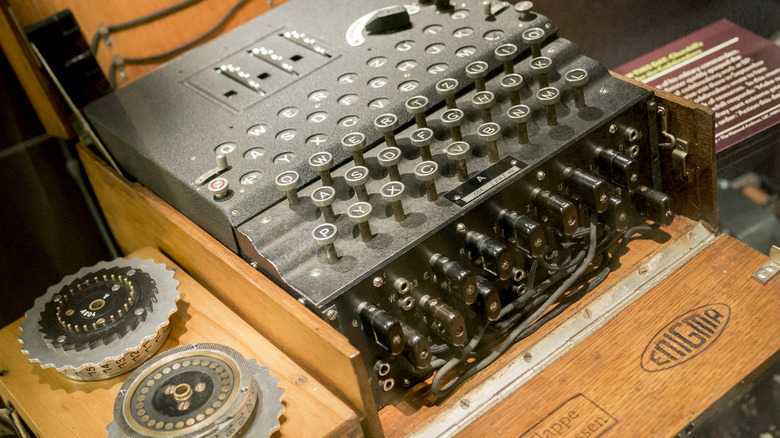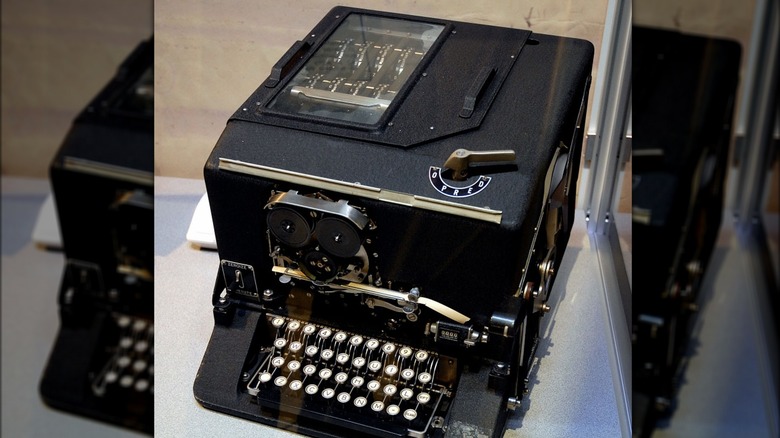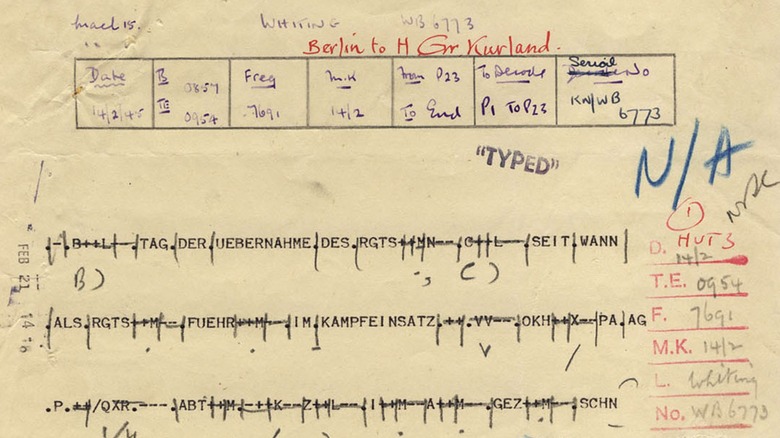The WWII Device That Had A Bigger Impact Than Any Gun Or Vehicle
At the height of World War II, both sides of the conflict were constantly monitoring the proverbial waves for any sign of enemy activity. Whether through paper, radio, or even messenger birds, the militaries of the war were always sending messages across the battle lines, while the other side was always looking for a chance to swipe their intelligence. This is why ciphers were employed in military correspondence; special codes used to mask vital information as meaningless gibberish.
One of the most well-known ciphers of the era was the Enigma Code, which was utilized by the Axis forces to preserve secrecy, though even that code was eventually cracked. The true secret star of World War II, and a vital component of the Allied victory, was a cipher on a level of complexity that the Enigma could only dream of achieving. That cipher was SIGABA, and if you've never heard of it, that just means it was working.
The mystery of SIGABA
Contrary to what its capitalized name may imply, SIGABA is not an acronym, but rather more of a portmanteau. The "SIG," comes from "Signalis Intelligence," a series of covert communication devices. Each of these devices was assigned a random mix of letters to make them more difficult to recognize. The "ABA" in SIGABA is meaningless by design.
The SIGABA devices were enciphering and deciphering terminals, similar to the Enigma machines. Both devices worked on a similar principle — a message would be typed in on the keypad, which in turn would fire off electrical signals to a series of rotors.
These rotors would rotate at randomly-set intervals, jumbling the letters and numbers of the message into a cipher, which would then be deployed via radio. When the message was received, it would be fed into another machine of the same model, deciphering it back into plain language.
The difference between the Enigma machine and SIGABA is that the Enigma machine only had three rotors to randomize its messages. SIGABA, on the other hand, had a whopping 15 rotors, all but guaranteeing that no two messages would ever look the same. Unlike the Enigma, the code of which could be cracked with enough brute force, it's virtually impossible for a human mind to crack SIGABA's code.
Unparalleled security
Throughout the entire history of World War II, SIGABA's code was never successfully cracked by the Axis forces, not that they ever got the opportunity. For one thing, every SIGABA device was equipped with a self-destruct mechanism. If a SIGABA operator was ever in danger, a quick flick of a switch would deploy a hidden cache of thermite, which would immediately ignite and fry the whole device.
Additionally, SIGABA was a closely-guarded secret of United States intelligence. The devices were sent to other members of the Allied forces, but they always came with an American operator, and nobody else was permitted to touch them. SIGABA could be remotely linked up to devices of a similar make — such as the British Combined Cipher Machine — to facilitate covert communication, but that was the only exception.
SIGABA's enciphering capabilities were so potent, that the device continued to be used even after the end of World War II, becoming a favorite of NATO forces. This continued until 1959, when evolving computer technology started to put the code at risk. The majority of SIGABA devices were destroyed for security purposes, with only a handful in the custody of researchers and museums today.


